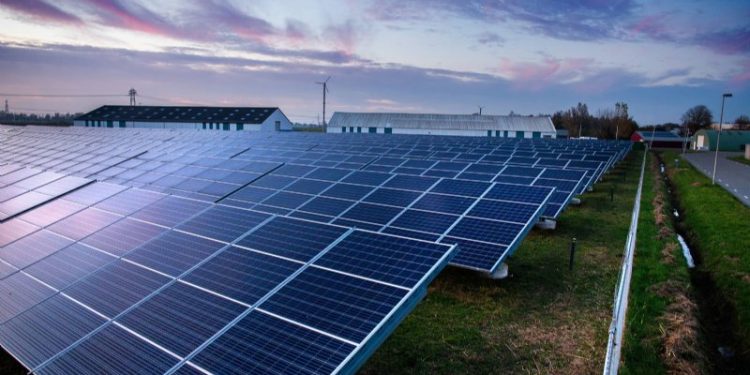Amid concerns raised by Glastuinbouw Nederland about the conversion of agricultural greenhouses into solar fields, data shows a rapid increase in such conversions throughout the Netherlands. This article examines the impacts on the agricultural landscape and wider implications for sustainability and land use.
As the debate intensifies, stakeholders are confronted with issues of land management, economic viability and environmental sustainability. This article examines the complex issues of integrating solar energy into agriculture, offering insight into the evolving situation and potential ways forward.
The clash between traditional farming methods and the growing solar energy industry has come to a head in Limburg, where Glastuinbouw Nederland has filed a formal complaint about an above-ground solar field near Venlo. The dispute highlights a broader trend of repurposing agricultural infrastructure for renewable energy, raising questions about land use, sustainability and economic viability.
According to Glastuinbouw Nederland, about 100 hectares of greenhouses in promising areas have been covered with solar panels, effectively taking these spaces out of agricultural cultivation. This shift highlights the changing nature of land management practices and the growing pressure on traditional agricultural operations to adapt to changing economic and environmental landscapes.
The conflict in Velden arose over the conversion of a 15-hectare greenhouse, originally intended for agricultural use, into a solar field. Despite receiving planning permission for the greenhouse in 2009, the land was sold to an investment firm in 2022, resulting in solar panels being installed on the existing greenhouse structure. Glastuinbouw Nederland argues that the conversion violates zoning rules and undermines the long-term viability of agricultural land.
The implications go beyond regulatory disputes, as Glastuinbouw Nederland warns of potential consequences for the region’s economic vitality and environmental sustainability. Converting agricultural land to solar energy production risks reducing opportunities for traditional farming operations, hinders the development of sustainable practices, and perpetuates negative perceptions of the region’s future prospects.
In response to these problems, Glastuinbouw Nederland called for stricter enforcement of zoning rules and a reassessment of government subsidies for solar power projects on agricultural land. While recognizing the potential of solar energy to complement traditional farming methods in certain contexts, the organization emphasizes the need to carefully consider wider implications for land use and sustainability.
As the debate unfolds, farmers, agronomists, agricultural engineers and policymakers must navigate the complex intersection of solar energy and agriculture, balancing the need to develop renewable energy with preserving agricultural heritage and promoting sustainable land management practices.
The conflict over converting farmland to solar fields highlights the challenges and opportunities presented by the intersection of traditional farming methods and renewable energy development. While solar energy promises to be a sustainable alternative, its integration into agricultural landscapes requires careful planning, regulatory oversight and stakeholder participation to ensure a balance between economic, environmental and social considerations.









